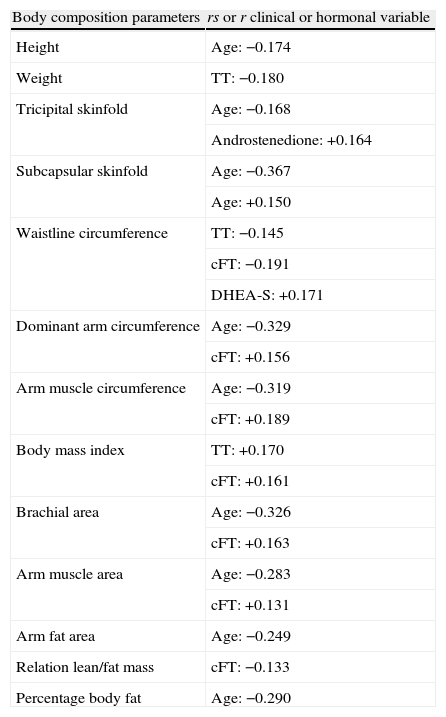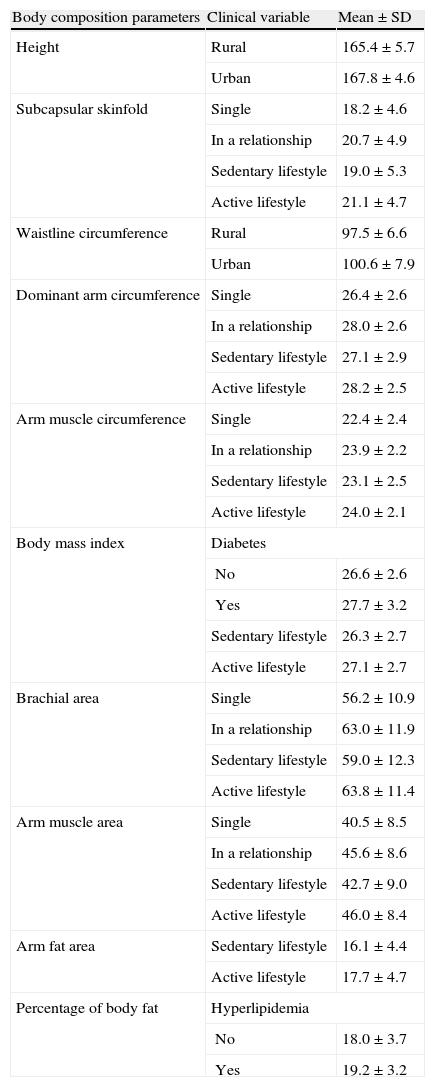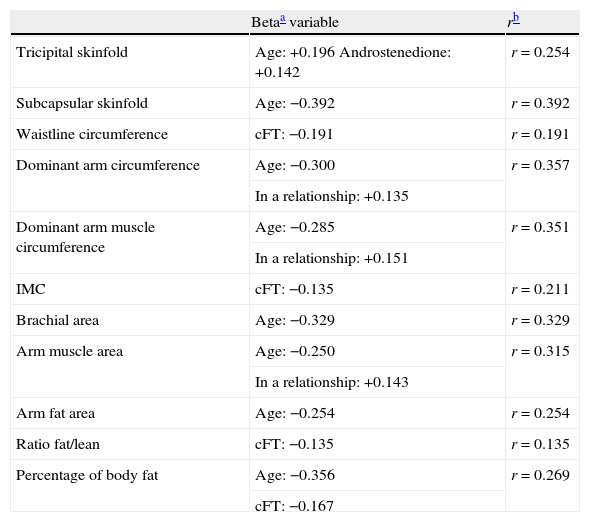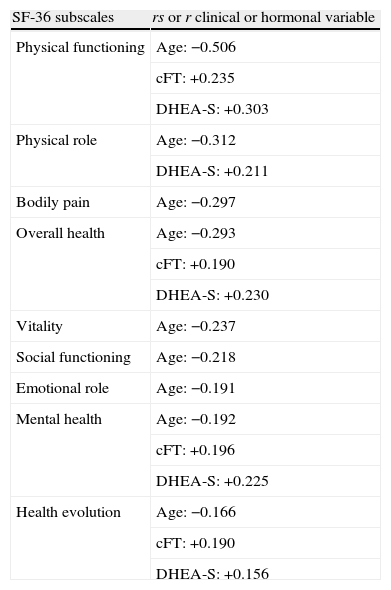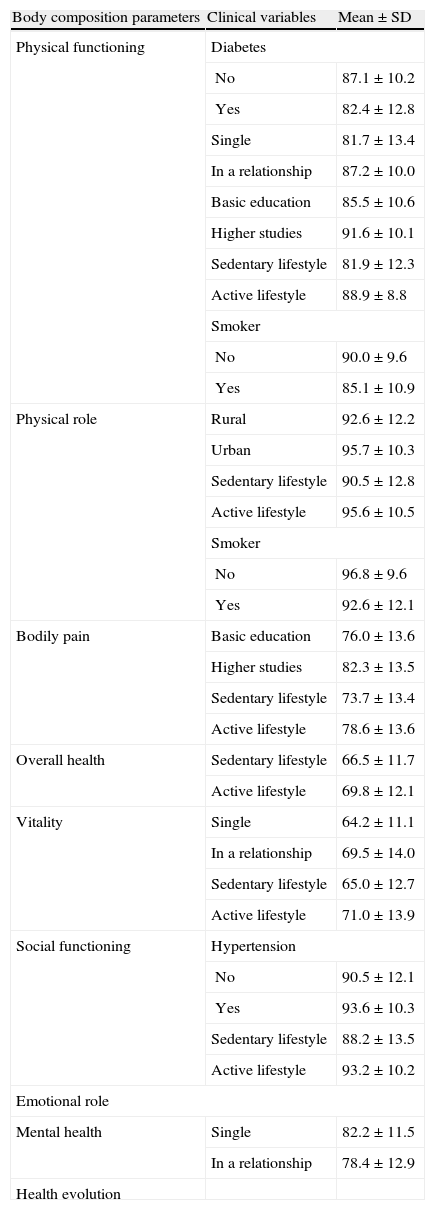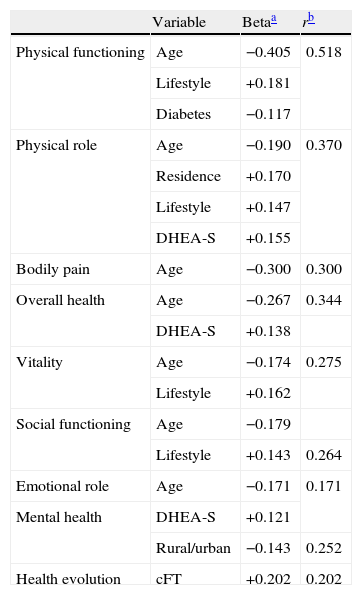To determine whether there was a relationship between sex hormone levels and body composition, bone health, and health-related quality of life in men over 50 years of age.
Material and methodsTransversal study carried out in 230 Spanish male outpatients. Body composition was studied using direct anthropometric measures: height, weight, waistline circumference, dominant arm circumference, tricipital skinfold, dominant arm skinfold, subscapular skinfold. Calculated anthropometric parameters were obtained. Quantitative ultrasound measurements of the calcaneus were performed and bone turnover markers were determined (N-telopeptides urinary excretion and calcium/creatinine urinary rate). Quality of life was studied using the short form 36 questionnaire (SF-36). Blood tests included total testosterone, sex hormone-binding globulin, calculated free testosterone (cFT), dehydroepiandrosterone sulfate (DHEA-S), androstenedione, 17-β-estradiol and gonadotrophins.
ResultscFT was associated with increased muscle and to decreased in fat content, even after adjusting for age (p<0.05). Bone density was only related to estradiol and its bioavailable fraction (p<0.05). DHEA-S and cFT were related (p<0.05) to some SF-36 subscales.
ConclusionscFT level is most associated with body changes that accompany aging. Androgen levels are not related to bone density. Decline in cFT and DHEA-s levels might be related to decreased quality of life.
Determinar la relación existente entre los niveles de hormonas sexuales y la composición corporal, la salud ósea y la calidad de vida en hombres por encima de los 50 años.
Material y métodosEstudio transversal en el que se incluyen 230 pacientes. Se determina la composición corporal utilizando parámetros antropométricos directos como el peso, la talla, la circunferencia de la cintura, la circunferencia del brazo dominante, el pliegue cutáneo tricipital, el pliegue en brazo dominante y el pliegue subcapsular. Se calculan parámetros antropométricos indirectos. Se realizan medidas cuantitativas de densidad ósea mediante ecografía del calcáneo, así como marcadores de recambio óseo (N-telopéptidos de excreción urinaria y relación calcio/ creatina). La calidad de vida se evalúa mediante el cuestionario abreviado de calidad de vida SF-36. Los análisis sanguíneos incluyen la determinación de testosterona total, globulina transportadora de hormonas sexuales (SHBG), testosterona libre calculada (TLc), sulfato de dehidroepiandrosterona (S-DHEA), androsteriona, 17-β-estradiol y gonadotropinas.
ResultadosLa TLc se asocia con un incremento muscular y una disminución del contenido graso, aun ajustándolo por edad (p<0,05). La densidad ósea sólo se relaciona con los niveles de estradiol y su fracción biodisponible (p<0,05). El S-DHEA y la TLc están asociadas a algunas subescalas del SF-36 (p<0,05).
ConclusionesLa TLc es la hormona que mejor se relaciona con los cambios corporales asociados a la edad; sin embargo, los niveles de andrógenos no están asociados a la densidad ósea. Un descenso en la TLc y el S-DHEA podría estar relacionado con un descenso en la calidad de vida.






